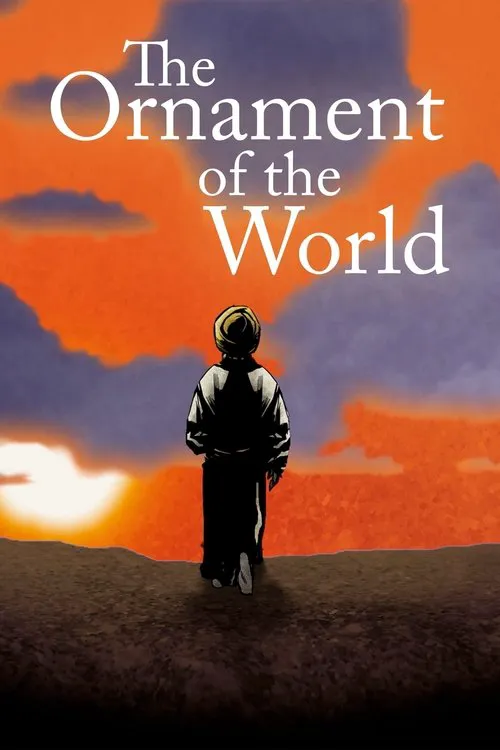The Ornament of the World

Trama
In the rich tapestry of medieval Spain, a unique and vibrant culture emerged, one that defied the conventional boundaries of faith and fostered an extraordinary level of collaboration among Muslims, Christians, and Jews. This extraordinary chapter in history, known as the period of Convivencia, was a time of mutual respect, cultural exchange, and creative expression that would leave an indelible mark on the world. The story of The Ornament of the World, a thought-provoking documentary, begins in the city of Cordoba, a metropolis that at its peak was one of the most cosmopolitan and enlightened centers of learning in the world. Here, the great mosque, a majestic architectural marvel, served as a beacon of unity, welcoming scholars and seekers of knowledge from across the known world. It was within these hallowed walls that a new kind of cultural landscape was born, one that celebrated the confluence of faiths and fostered a spirit of cooperation. As the camera follows the documentary's narrator through the labyrinthine alleys and grand piazzas of Cordoba, Granada, Seville, and Toledo, the viewer is transported to an era of breathtaking beauty and profound intellectual curiosity. From the majestic Alhambra palace, with its intricately tiled courtyards and sumptuous gardens, to the University of Al-Karaouine in Fez, which attracted scholars from across the Islamic world, the film reveals a rich tapestry of cultural and intellectual achievements. At the heart of this phenomenon was the tolerance and open-mindedness of Islamic rule in medieval Spain. The caliphs who ruled from Cordoba sought to create a society that was governed by the principles of justice, equality, and intellectual freedom. They encouraged the translation of classical texts from Greek and Roman scholars, as well as the development of innovative technologies and artistic forms. This was an era in which scholars, poets, and thinkers from diverse backgrounds were drawn to the courts of the caliphs, attracted by the promise of a new kind of cultural renaissance. One of the most fascinating figures of this era was a Jewish polymath named Maimonides, who would go on to become one of the greatest philosophers of the Middle Ages. Born in Cordoba, Maimonides was the son of a rabbi who had been forced to flee the city due to the Christian Reconquista, a brutal series of campaigns aimed at recolonizing Spain for Christianity. Despite these challenges, Maimonides' father continued to teach and study in Cordoba, cultivating a passion for intellectual inquiry that would shape the course of his son's life. Maimonides' own story is one of incredible achievement, as he navigated the complex web of faith and identity in medieval Spain. From his early days as a Jewish merchant in Fez to his later years as a respected philosopher and doctor in Alexandria, Maimonides' life was marked by a relentless pursuit of knowledge and wisdom. Throughout The Ornament of the World, the viewer is struck by the sheer magnitude of the achievements of this era. From the intricate calligraphy and geometric patterns of Islamic art to the soaring architecture of the great mosques and synagogues, the cultural landscape of medieval Spain is revealed to be a testament to the power of cooperation and creativity. However, as the documentary also reveals, this extraordinary chapter in history was ultimately subject to the vicissitudes of power and politics. The Reconquista, a Christian crusade aimed at recolonizing Spain for Christianity, eventually succeeded in conquering Toledo, a city that had been a beacon of tolerance and cultural exchange. The once-thriving Jewish community was expelled, their homes and temples destroyed. The Alhambra, once a symbol of the convivial spirit of the Islamic court, would also fall to the Christians, its once-vibrant walls and courtyards gradually succumbing to the depredations of time and warfare. As the Christian Reconquista gained momentum, the fragile balance of faiths in medieval Spain began to crumble, a devastating loss for the vibrant cultural landscape that had once flourished. The Ornament of the World ends on a poignant note, as the camera lingers on the ruins of a once-great mosque, its walls cracked and worn, its once-vibrant tiles faded to dust. And yet, even in the face of this tragic decline, the documentary leaves the viewer with a sense of hope, a testament to the enduring power of cultural exchange and the extraordinary achievements of a bygone era. For in the city of Seville, where the film concludes, a vibrant cultural scene was reborn in the 16th century, a testament to the indomitable spirit of a people who refused to let the darkness of the past extinguish the light of the present. As the documentary fades to black, the viewer is left with a haunting vision of the city's great cathedral, its soaring spires and Gothic arches a testament to the enduring power of art and culture to transcend even the most profound of human conflicts.
Recensioni
Raccomandazioni



